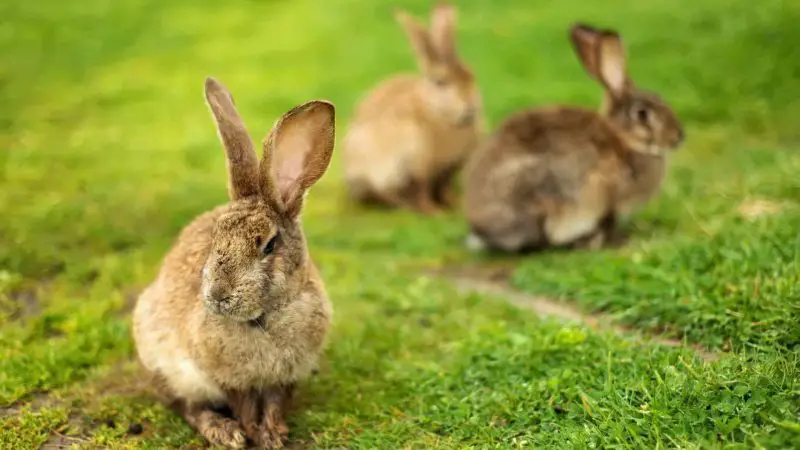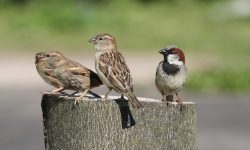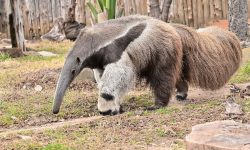Rabbits are charming, fluffy creatures often associated with springtime, hopping through meadows and nibbling on carrots. But beyond their adorable demeanor, these social animals have fascinating behaviors and surprisingly unique terminology. Have you ever wondered what a group of rabbits is called?
You’re in for some interesting facts! In this article, we’ll dive into the official term for a group of rabbits, their social behavior, and much more.
What Is a Group of Rabbits Called?

The Correct Term: A “Fluffle” or a “Colony”
The most widely accepted term for a group of rabbits is a colony. This term is often used in scientific and zoological contexts to describe a group of rabbits living together, especially in the wild. In more informal or regional usage, particularly in parts of Canada, the word fluffle has gained popularity due to its endearing and whimsical sound.
A colony typically refers to a structured social group of rabbits that includes both males and females and often multiple generations. These colonies function with a hierarchy and established territories, especially in wild environments. In contrast, fluffle is more commonly used to describe a group of domestic rabbits, evoking a sense of cuteness and affection.
Other Terms You Might Hear
While “colony” and “fluffle” are the most recognized terms, you might also come across the term warren, which refers not to the rabbits themselves but rather the network of burrows they inhabit. Additionally, in some hunting or historical contexts, groups of rabbits may be referred to as a nest or even a herd, although these are far less common.
Why Do Rabbits Live in Groups?
Natural Social Behavior
Rabbits are inherently social animals. In the wild, they tend to live in groups for protection and social interaction. These groups help rabbits stay safe from predators by providing more eyes and ears to detect danger. When one rabbit senses a threat, it will often thump its hind legs to warn the others, prompting a collective escape.
Living in groups also allows rabbits to share resources, such as food and shelter. Social grooming and bonding are common behaviors that promote a sense of unity and reduce stress within the group. This strong social structure makes rabbits excellent companions when kept in pairs or small groups as pets.
Hierarchy Within a Colony
Just like many other animals, rabbit groups operate within a hierarchy. Dominant rabbits assert their roles through body language, grooming habits, and access to food. This hierarchy helps maintain order within the group and prevents constant conflicts. Even in domestic settings, rabbits may display dominance behaviors, especially if new rabbits are introduced into an established group.
Understanding the Structure of a Rabbit Group
Mating and Family Units
In the wild, rabbit colonies often consist of a dominant male (buck), several females (does), and their offspring (kits). The dominant buck usually mates with the does in the group, and the females raise the young in individual nesting chambers within the shared warren.
This family-centric organization ensures the continuity of the group and helps the kits receive the protection and care they need. The mother rabbit nurses her babies for just a few minutes a day, typically at night, to avoid attracting predators.
Communication Among Rabbits
Rabbits communicate using subtle body language, thumps, and sometimes soft vocalizations. These signals convey warnings, affection, or discomfort. In group settings, these communication methods are crucial for maintaining harmony and ensuring the survival of the colony.
For example, mutual grooming reinforces social bonds, while ear position and posture can indicate a rabbit’s mood or status within the group. Observing these behaviors helps rabbit owners and researchers better understand their social dynamics.
Fun Facts About Rabbit Groups
1. A Fluffle by Any Other Name
Though “fluffle” is not an officially recognized scientific term, it has captured the imagination of rabbit lovers around the world. The term is especially popular in online communities and social media, where it often accompanies adorable photos and videos of rabbits cuddled together.
2. Rabbits Can Form Strong Bonds
When kept as pets, rabbits can form incredibly strong bonds with one another. Once bonded, they often become inseparable, eating, grooming, and sleeping together. Bonded pairs or groups are generally happier and healthier, as isolation can lead to stress and behavioral issues.
3. Warrens Can Be Complex
The warren, which houses a rabbit colony, is a complex structure with multiple entrances and chambers. These burrows can extend several feet underground and provide shelter from predators and extreme weather. Some warrens are passed down through generations, creating a legacy home for rabbit families.
4. Rabbits Use Scent to Identify Group Members
Rabbits have scent glands under their chins, which they use to mark territory and recognize members of their group. You may notice pet rabbits rubbing their chins on objects—this behavior is called “chinning” and is a way of marking something as familiar and safe.
5. Rabbits Have Excellent Memory
Rabbits are not only social but also intelligent. They can remember members of their group, even after long separations. This memory plays a crucial role in maintaining group dynamics and reestablishing bonds after time apart.
Domestic Rabbits vs. Wild Rabbits: Social Differences
Group Living in the Wild
Wild rabbits rely on their group structure for survival. They need the protection of numbers to fend off predators like foxes, birds of prey, and snakes. In the wild, being part of a colony is essential, as it improves their odds of detecting danger and escaping in time.
Wild rabbit colonies are often more structured and rigid than those of domestic rabbits. They operate under strict social hierarchies and follow instinct-driven routines.
Domestic Rabbit Dynamics
Domesticated rabbits, while still social, have slightly different dynamics. They do not always form colonies naturally, especially when housed individually by humans. However, when given the opportunity, they can bond deeply with one or more companions.
Bonding domestic rabbits takes time and patience, often involving a process of supervised interactions and neutral territory introductions. Once bonded, domestic rabbits enjoy many of the same benefits as their wild counterparts: companionship, reduced stress, and increased playfulness.
How to Properly Care for a Group of Rabbits
Providing Adequate Space
Whether you have two rabbits or a whole fluffle, space is essential. Rabbits need room to hop, stretch, and explore. A spacious enclosure with multiple hiding spots, tunnels, and platforms mimics their natural environment and encourages healthy social interactions.
Indoor rabbit enclosures should be at least 8 square feet per rabbit, with additional play space available daily. Outdoor hutches or rabbit runs must be predator-proof and protected from extreme weather.
Managing Rabbit Bonding
Bonding rabbits requires understanding their behavior and patience. It’s best to introduce rabbits in neutral territory and monitor their interactions closely. Bonded rabbits will begin to groom each other and rest side by side.
Avoid forcing rabbits to bond. If they fight or display aggressive behavior, separate them and try again later. Some rabbit pairs bond quickly, while others may take weeks or months.
Nutrition and Health in Groups
Feeding rabbits in groups requires careful observation to ensure all individuals are eating enough. Dominant rabbits may try to control food access, so offering multiple feeding stations can prevent bullying.
A diet rich in hay, fresh vegetables, and rabbit pellets ensures balanced nutrition. Clean water should always be available. Regular vet visits help monitor the health of each rabbit in the group.
Common Misconceptions About Rabbit Groups
Rabbits Can Be Fine Alone
While some people believe rabbits can live alone without issue, this is generally not recommended. Rabbits are social animals and often suffer from loneliness when kept in isolation. A bonded companion provides mental stimulation and emotional comfort.
All Rabbits Get Along Instantly
Not all rabbits are compatible, even if they seem similar in age or breed. Each rabbit has a distinct personality, and introducing new rabbits into an established group must be done gradually to avoid stress and aggression.
Large Groups Are Easier to Manage
Managing a large group of rabbits can be challenging. Conflicts over hierarchy, food, or space may arise, and it becomes more difficult to monitor individual health. If you’re planning to keep multiple rabbits, consider your space, time, and ability to provide for each animal properly.
Conclusion
So, what is a group of rabbits called? The most accurate term is a colony, though the word fluffle has become a beloved alternative, especially among pet owners. Whether wild or domestic, rabbits thrive in social settings where they can bond, communicate, and live harmoniously. Understanding their group behavior helps us appreciate just how complex and endearing these animals truly are.
From warrens to grooming rituals, the rabbit world is full of surprises. If you’re considering adding rabbits to your family, remember that companionship is key to their happiness and well-being. And now, the next time someone asks, “What is a group of rabbits called?” you can answer with confidence—and maybe even a smile.






